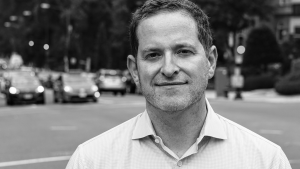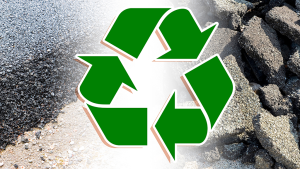Large pickup truck or SUV owners who attended the recent Good Roads conference in Toronto may have experienced a twinge of self-reproach after listening to the opening day’s keynote speaker.
The speaker was writer and urban mobility expert David Zipper, a senior fellow at the transportation research and advocacy organization MIT Mobility Initiative, who is not a fan of the increasing size, weight and predominance of pickups and SUVs.
In a compelling address, he took aim at “car bloat” and its detrimental environmental, social, infrastructure and safety consequences.
Oversized vehicles contribute to increased road maintenance costs, generate more emissions because “more power is needed to power them” and pose a traffic safety hazard for pedestrians and cyclists. Especially at risk are children and people in wheelchairs who are often out of sight of drivers, he said.
Not only are vehicles becoming heavier, they’re become higher, increasing by about seven inches between 1991 and 2023. One of the most dramatic images in his PowerPoint presentation was a staged photograph of a group of children sitting in front of a pickup truck.
“Because of the height, the driver can’t see them.”
Another image that may have struck a chord with municipal officials in the audience was of a magazine article with a photograph of a guardrail and a headline that read, “A 7,000-pound car smashed through a guardrail.”
“If roads have to be updated to accommodate absorbedly large cars, taxpayers will have to foot the bill,” he said.
In 1977, SUVs and trucks together represented 23 per cent of American new car sales; today they comprise more than 80 per cent. A major reason for the large figure is that the Big Three automakers are “no longer making sedans and station wagons.”
It’s not just single vehicles that are a maintenance road issue. Auto haulers transporting new vehicles across the country are too heavy. At present, their maximum load limit in the United States is 80,000 pounds. Rather than lower vehicle weight, the automakers have been lobbying congress to increase that limit, he said.
Although the presentation referenced a number of American statistics and issues, Zipper made it clear the problem of oversized vehicles is a Canadian and a worldwide problem.
But there is growing legislative and societal resistance to car bloat. Studies have shown that many Americans think SUVs and trucks have become too large and should be regulated. Some states have or are considering legislation to regulate them. In Canada, purchasing a parking permit in Montreal for a “big SUV costs 80 per cent more than for a modest-priced sedan.”
Other keynote speakers included University of Colorado Denver professor of civil engineering Wes Marshall, author of Killed by a Traffic Engineer. The theme of his talk was the need to challenge conventional thinking about transportation design and safety.
In another session, Good Roads’ municipal infrastructure expert James Smith highlighted the infrastructure deficit confronting Ontario’s municipalities.
Attended by approximately 2,000 delegates, the conference featured a long list of information-packed seminars and panel discussions, such as one on the future of Canada-United States relations and one on green infrastructure strategies municipalities can undertake.
There were also some thought-provoking speeches, including one given by Abram Benedict, the Ontario regional chief for the Chiefs of Ontario. First Nations have to be full partners in any infrastructure projects that will impact their communities, said Benedict, who also participated in a panel on Strengthening Indigenous-Municipal Collaboration on those projects.
In a conference devoted to municipal issues and, in particular, road ones, there were two awards for the projects and people who keep those roads in a state of good repair.
The Municipal Paver of the Year Award went to the Town of Milton and Associated Paving & Materials Ltd for a significant overlay initiative in that town last year. Spanning 17 streets, the project involved 95,000 square metres of milling, extensive asphalt resurfacing and key accessibility upgrades, including 100 AODA-compliant sidewalk corners.
In the second category, the County of Essex and contractor Green Infrastructure Partners were presented with the Municipal Concrete Award for the construction of a two-lane concrete roundabout connecting County Road 42 and County Road 43. Concrete was chosen as the material for the roundabout because of its durability in Essex County’s climate, which is characterized by temperature fluctuations and freezing and thawing in the winter, says a post on the county’s webpage.
Sponsored by Concrete Ontario, the Municipal Concrete award recognizes project excellence and innovation between municipalities and contractors.
Recognizing the achievements, dedication and volunteerism of a long-term municipal official was another highlight. Middlesex County engineer and former Good Roads president Chris Traini received the 2024 Volunteer of the Year Award.
In presenting the award, Good Roads executive director Scott Butler said Traini brings an unwavering dedication, exceptional service and significant contributions to the association and its members.
“Chris has served as the County Engineer for Middlesex County for over 20 years, during which he has demonstrated outstanding leadership and expertise in the field of engineering and public works operations.”







Recent Comments